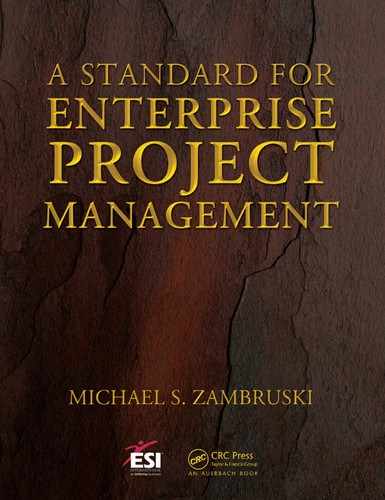Chapter 4
Project Execution and Control
In order to optimize proper completion of approved project tasks, the following protocols should be defined and regularly followed throughout project implementation.
4.1 Issues and Risk Management
Identifying, recording, analyzing, and managing issues and risk are collaborative efforts of the project team and sponsor. They should begin as soon as the project is approved, but no later than commencement of project implementation. The issues/risk management plan and issues/risk log are typically included as Attachments D and E, respectively, in the SOW. Figure 4.1 is a simple issues/risk management plan. Appendix 15 offers a complete template.
Figures 4.2a and 4.2b show the issues/risk log that accompanies the issues/risk management plan. Together they ensure consistent handling of risks and issues. An Issues/Risk Log template and completed sample are located in Appendices 16 and 17.
4.2 Escalation
Especially with complex projects, a formal escalation policy is needed to ensure timely resolution of tasks, issues, and decisions which involve negotiable or debatable viewpoints. It is typically included as Attachment F to the SOW. Figure 4.3 is a sample; a template is available as Appendix 21.
4.3 Communication
The communication protocol includes the format, media, and points of control for information disseminated to team members and stakeholders. Key elements of successful communication include consistent delivery, comprehensive horizontal and vertical distribution, and timeliness. The communication protocol also addresses project status meetings, namely, their frequency, duration, location, internal and external attendees, and the standing agenda. One of the first meetings prescribed by the communications plan should be the project kickoff, where the stakeholders and key members of the project team participate in a detailed discussion of the SOW. The communications plan is typically included as Attachment G to the SOW.
Figure 4.4a is a sample communications plan. Figure 4.4b depicts typical communication intensity and participants throughout the project phases. Figure 4.5 shows a meeting agenda, and Figure 4.6 depicts meeting minutes. Templates are located in Appendices 22, 23, and 24.
4.4 Documentation
The mode (paper vs. electronic), storage location (physical vs. electronic), and version control of project documents must be formally defined and continuously maintained for easy retrieval and up-to-date accuracy. This pertains to all project definition, planning, and control documents; detailed budget and design records; the issues/risk log; meeting agendas and minutes; training and testing guidelines; workflow diagrams; and any other key reference items. The most efficient way to organize and facilitate this is to establish a project documentation protocol and include it as Attachment H to the SOW.
Figure 4.7 shows a standard protocol for storage and retrieval of project documents. A template is included in Appendix 25.
4.5 Testing
Comprehensive validation testing must be planned and conducted against the quality metrics specified in the SOW so that it is absolutely clear when deliverables meet business requirements. Interim verification tests should be developed and conducted at appropriate intervals to gauge progress and mitigate risk. The Testing Protocol is typically included as Attachment I to the SOW. Validation testing can take many forms and range from quite basic to very complex in nature. Included in Appendix 18 is a simple template for testing staff readiness prior to implementation of a new business process. Testing that pertains to technical solutions (e.g., medical, telecommunications, information services, etc.) are typically quite sophisticated and under the control of a professional test planning and execution manager.
4.6 Training
Development, delivery, and confirmation of educational material must be assessed at each project phase to determine both the need for and the type of appropriate training. When included it is found at Attachment J in the SOW. As is the case with validation testing, training plans can take many forms and range from basic to quite complex. A simple example is presented in Appendix 19 at the end of this book.









